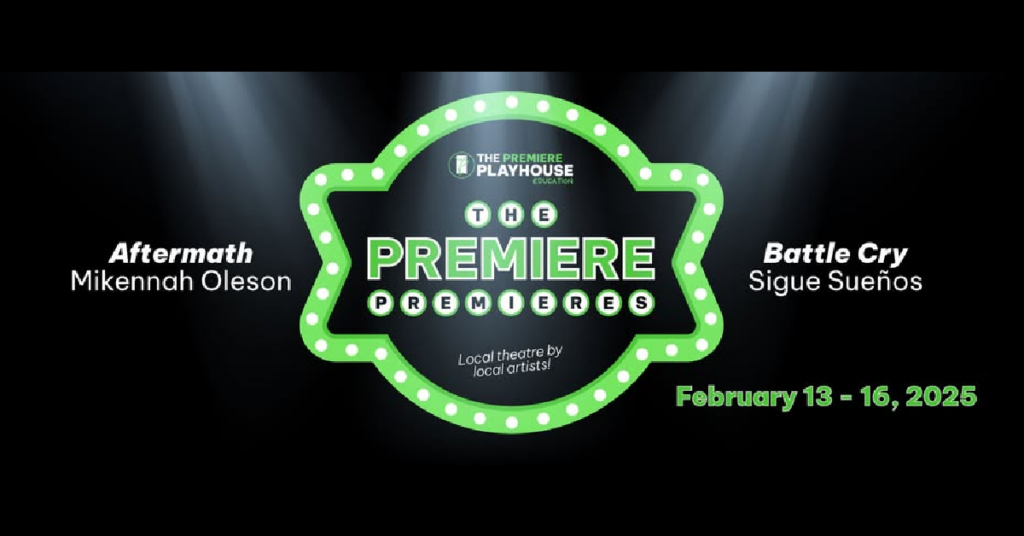Year-Long Program Culminates in Premieres of Local Plays
February 8, 2025

The Premiere Playhouse’s year-long playwriting program will culminate next week with The Premiere Premieres, a series of double-feature presentations of new plays written, produced, and performed by local talent. Audiences will have a special opportunity to talk with the two playwrights on Saturday, Feb. 15 at the Orpheum Theater Center, 315 N. Phillips Ave. in Sioux Falls.
With support from a South Dakota Humanities Council grant, The Premiere Playhouse provides the program as a platform and development lab for original theater works by local artists age 14+ in the Sioux Falls area. The open submission, blind review process led to a Festival of New Plays on Sept. 7, 2024, at which four semifinalist selections were presented, and two finalists were chosen.
The finalists, Aftermath by Mikennah Oleson and Battle Cry by Sigue Sueños, will be fully staged for audiences Feb. 13-16. Before and after the Feb. 15 production, the public can meet Oleson and Sueños and participate in a talk-back session, at which the two playwrights will be joined by scholars Jen Luke, Oliver Mayes, and Carlie Terrall.
These interactive events will provide insight into what goes into developing a new play for the community in which you live, said Oliver Mayes, managing artistic director for The Premiere Playhouse. “We at The Premiere Playhouse are continuing to embrace our ability to cultivate a safe, effective environment for local artists to explore their self-expression, allowing them to truly find their voice and carefully hone their skills, in turn contributing to the greater good of their community in unique ways,” he said.
Mayes believes that The Premiere Playwriting Program is a necessary ingredient for nurturing distinct creative voices through the development of educational programs and the delivery of important stories that accurately portray their communities. He invites the public to join and share the experience.
“I encourage anyone in the Sioux Empire area that feels inspired by that notion to engage with our programming in whichever avenue seems of most interest to you, and I can almost certainly guarantee that you will find something else that you hold potential for or find great fulfillment in,” Mayes said. “Take the dive and get creative!”
The Feb. 15 playwright meet-and-greet and scholar talk-back session are free. Tickets to see performances of the plays, running Feb. 13-16, are $25 per two adults ($12.50 each) and $15 per two students of any level ($7.50 each).
Additional information, including showtimes and ticket prices, is available at The Premiere Playhouse. Community members interested in attending a performance but without the means to do so can contact Oliver Mayes at oliver@thepremiereplayhouse.com for assistance.
Learn more about humanities programming in South Dakota by signing up for SDHC e-Updates!